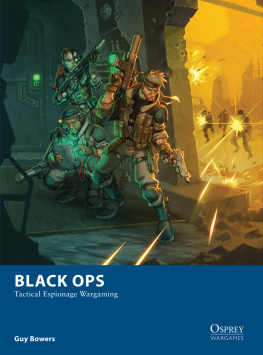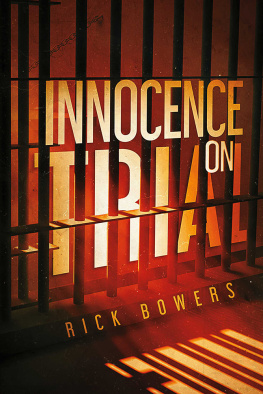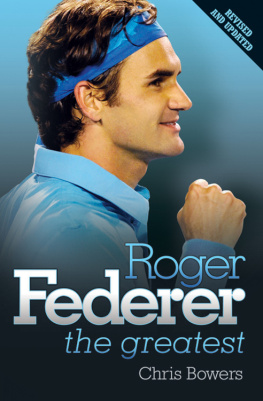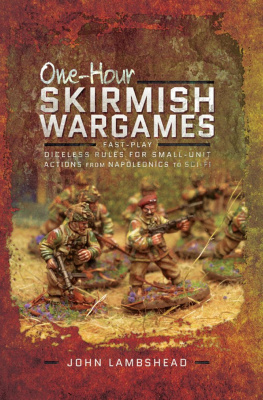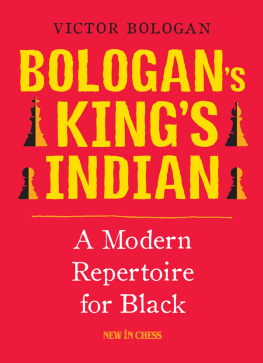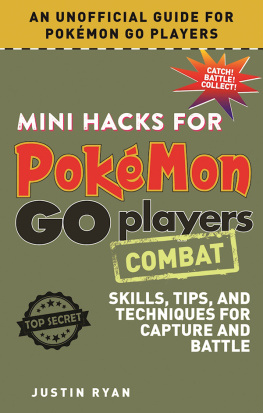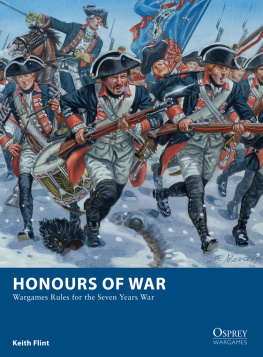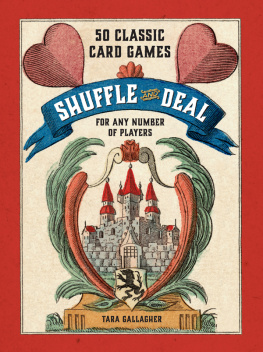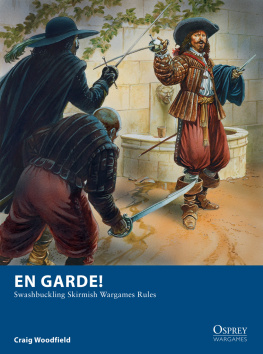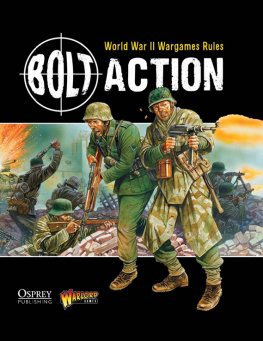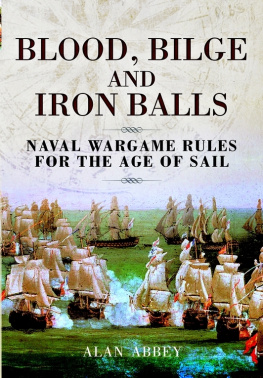
This electronic edition published in 2015 by Bloomsbury Publishing Plc
First published in Great Britain in 2015 by Osprey Publishing,
PO Box 883, Oxford, OX1 9PL, UK
PO Box 3985, New York, NY 10185-3985, USA
E-mail:
Bloomsbury is a registered trademark of Bloomsbury Publishing Plc
Osprey Publishing, part of Bloomsbury Publishing Plc
2015 Guy Bowers
All rights reserved
You may not copy, distribute, transmit, reproduce or otherwise make available this publication (or any part of it) in any form, or by any means (including without limitation electronic, digital, optical, mechanical, photocopying, printing, recording or otherwise), without the prior written permission of the publisher. Any person who does any unauthorised act in relation to this publication may be liable to criminal prosecution and civil claims for damages.
No responsibility for loss caused to any individual or organization acting on or refraining from action as a result of the material in this publication can be accepted by Bloomsbury or the author.
A CIP catalogue record for this book is available from the British Library Guy Bowers has asserted his right under the Copyright, Designs and Patents Act, 1988, to be identified as the author of this book.
Print ISBN: 978-1-4728-0781-6
PDF e-book ISBN: 978-1-4728-0782-3
EPUB e-book ISBN: 978-1-4728-0783-0
Typeset in Sabon and Myriad Pro
www.ospreypublishing.com
Osprey Publishing supports the Woodland Trust, the UKs leading woodland conservation charity. Between 2014 and 2018 our donations will be spent on their Centenary Woods project in the UK.
ACKNOWLEDGEMENTS
Thanks to Playtesters:
Ross Watkins, Mark Backhouse, David Davies, Sam Davies, Lee Pat Hunter, Eoghan Kelly, Casey Vandenberg, , Peter Bowles, Ricky Phoenix, James Oram, Darren Ashton, Matthew Dudley, Calise North, Peter Gates, Spencer Talbot, Greg Albricht, William Salton, Jacob Fitzpatrick, Deck Haileien, Kevin Casey, Erwin Mooney, Stephan Fay, Peter Kerry, Andrew Lauton, Chris Nord, Craig Thomson, Steve Johnson, Matt Houghton, Paul O Conner, James Brandon, Nick Cleeve, Ron Sceal, Ben Jeal, Cad Jeal, Adam Jeal and John Daley.
Miniatures painted by:
Paul Eaglestone, Paul Burkin, Martin Oaff, Ross Watkins and the author.
Special thanks to:
Empress Miniatures, Eureka Miniatures, Gripping Beast, Karwansaray BV and
Sam Catterall.
Dedicated to the Ice Queen. Ever and always.
Contents
FOREWORD

Ive a confession to make. Computer games have been a very addictive past-time for me. The likes of Metal Gear Solid and Syphon Filter have taken up far too many hours of my spare time. Movies like The Dogs of War, The Wild Geese, Black Hawk Down, Zero Dark Thirty, the Russian 9 Rota and dozens of other documentaries and movies made me think about recreating raids and small unit actions on the tabletop. Black Ops digs into these films, as well as the rich literature of spy fiction such as James Bond and Jason Bourne, and computer games such as Metal Gear Solid and Splinter Cell. Youll even find a little Arnie and Sly in here.
The games origins started out as a project which never saw the light of day called V for Victory, a commando game written for Warhammer Historical. Thats where I first looked at the basic ideas of a raid against an unsuspecting defending force. The basis of the scenario generator came from this commando game, so you should find Black Ops is quite adaptable to any 20th- or 21st-century setting with a little work. The game has evolved much since then, being heavily influenced by card activation games from the TooFatLardies and Studio Tomahawk.
These ideas for raiding missions finally took form and became a ninja game inspired by Tenchu Stealth Assassin, written for a demo at Salute 2012 and appearing in Wargames, Soldiers and Strategy magazine. Soon, the basics of a cunning game began to take root in my mind. It had to be simple, but with hidden depth, so strategy was as important as sheer might or firepower. I pitched the idea to Phil Smith when I interviewed him for the magazine. It was obvious that he did not need a commando game or a ninja game with the excellent Bolt Action and Ronin rules available, but what about a modern covert operations game? Thus Black Ops was born.
I wanted a tactical espionage skirmish game for two (or more) players, designed to recreate the tension of a covert operation on the tabletop. It had to be a simple fast play rules set with an optional campaign system, where one side attempts to make progress towards their goal while the other side does what it can to thwart their plans. I wanted to use cards but not force players to have to buy a specialist set hence the use of playing cards.
As with all things, theres plenty more I wish I could have added. Space and time was against me. Im sure some of these scenarios will appear in the wargaming press or on the Osprey website. Whatever you do with Black Ops, have fun!
INTRODUCTION

Military technology has expanded and surpassed anything which could have been imagined a century before. Nuclear weapons can eliminate entire cities. Modern laser- and GPS-guided munitions offer incredible accuracy and modern optics can eliminate the challenges of night-fighting. Drones and satellite communication give commanders a real-time feed of events on the battlefield, while modern vehicles offer increasingly powerful armament and effective protection. Technology would seem to offer all the answers.
However, the increasing reliance on technology is not without its risks drones can be jammed or hijacked, communications intercepted, precision weapons are only good if the correct target location is known, and a poorly trained man with an RPG can destroy a cutting-edge vehicle. Technology can give a force an edge but the deciding factors will be its tactics, training and discipline.
So how is victory to be achieved? In traditional military thought this is achieved by applying a forces centre of gravity (in Clausewitzian terms) to a point in the enemy line where it can be smashed. Such blitzkrieg concepts work well where your enemy is defined, but are less effective in asymmetrical conflicts where the enemy is dispersed and there are no front lines.
The era of large battles may not yet be fully over, but there has been an increasing move away from the use of overwhelming force towards operations by small bodies of soldiers achieving their goals through ambush and sabotage using the tools of the insurgent and the guerrilla against them. This echoes the strategy of Sun Tzu where victory is achieved by the extraordinary, not the ordinary. It is the surprise attack that will succeed where the frontal attack fails.
Fundamentally, all war is based on deception. Mislead the enemy and attack where they least expect it, at targets that are weak and disorganised. Make the enemy think you can strike anywhere so their resources will be divided trying to protect everything at once.
Welcome, then, to this world of espionage, sabotage and false-flag operations, where one mans freedom fighter is another mans terrorist, and the line between guerrilla and elite soldier is increasingly blurred. Welcome to
Next page
